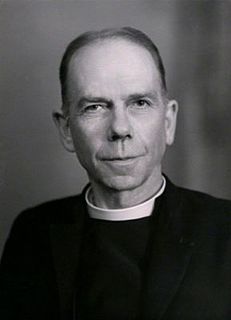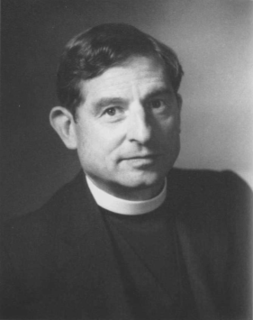
William Grocyn was an English scholar, a friend of Erasmus.

Gilbert White FRS was a "parson-naturalist", a pioneering English naturalist, ecologist, and ornithologist. He is best known for his Natural History and Antiquities of Selborne.

Richard William Church was an English churchman and writer, known latterly as Dean Church. He was a close friend of John Henry Newman and allied with the Tractarian movement. Later he moved from Oxford academic life to some prominence in the Church of England.

Brompton Cemetery is a London cemetery, managed by The Royal Parks, in West Brompton in the Royal Borough of Kensington and Chelsea. It is one of the Magnificent Seven cemeteries. Established by Act of Parliament and laid out in 1839, it opened in 1840, originally as the West of London and Westminster Cemetery. Consecrated by Charles James Blomfield, Bishop of London, in June 1840, it is one of Britain's oldest and most distinguished garden cemeteries. Some 35,000 monuments, from simple headstones to substantial mausolea, mark more than 205,000 resting places. The site includes large plots for family mausolea, and common graves where coffins are piled deep into the earth. It also has a small columbarium, and a secluded Garden of Remembrance at the northern end for cremated remains. The cemetery continues to be open for burials. It is also known as an urban haven for nature. In 2014, it was awarded a National Lottery grant to carry out essential restoration and develop a visitor centre, among other improvements. The restoration work was completed in 2018.

John Job Crew Bradfield was an Australian engineer best known as the chief proponent of the Sydney Harbour Bridge, of which he oversaw both the design and construction. He worked for the New South Wales Department of Public Works from 1891 to 1933. He was the first recipient of an engineering doctorate from the University of Sydney, in 1924. Other notable projects with which he was associated include the Cataract Dam, the Burrinjuck Dam, and Brisbane's Story Bridge. The Harbour Bridge formed only one component of the City Circle, Bradfield's grand scheme for the railways of central Sydney, a modified version of which was completed after his death. He was also the designer of an unbuilt irrigation project known as the Bradfield Scheme, which proposed that remote areas of western Queensland and north-eastern South Australia could be made fertile by the diversion of rivers from North Queensland.

Bradfield College, formally St Andrew's College, Bradfield, is a public school for pupils aged 11–18, located in the small village of Bradfield in the English county of Berkshire. It is noted for producing plays in Ancient Greek and its open-air amphitheatre.

Thomas William Harpur (1929–2017), known as Tom Harpur, was a Canadian biblical scholar, columnist, and broadcaster. An ordained Anglican priest, he was a proponent of the Christ myth theory, the idea that Jesus did not exist but is a fictional or mythological figure. He was the author of a number of books, including For Christ's Sake (1986), Life after Death (1996), The Pagan Christ (2004), and Born Again.

Charles Frederick Tunnicliffe, OBE, RA was an internationally renowned naturalistic painter of British birds and other wildlife. He spent most of his working life on the Isle of Anglesey. He is popularly known for his illustrations for the novel Tarka the Otter.

Cromhall is a village in South Gloucestershire, England. It is located between Bagstone and Charfield on the B4058, and also borders Leyhill. The parish population taken at the 2011 census was 1,231.

The Cambridgeshire High School for Boys was founded as the Cambridge and County School for Boys in Cambridge, England, in 1900.

Frank Russell Barry was an Anglican bishop and author who served as Bishop of Southwell for over 20 years in the middle of the 20th century.
Charles Ashpitel Denton was an English amateur footballer who twice won the FA Cup with Wanderers. In his professional life, he was a solicitor.
Allen William Seaby Is best known as an ornithological painter and printmaker, and Professor of Fine Art at the University of Reading. He was the author of several art books for students, and also wrote and illustrated books for children.
Philip Prichard Henderson was a British novelist and literature critic.

Sir William Beach Thomas, was a British author and journalist known for his work as a war correspondent and his writings about nature and country life.

Hedley Frederick Davis Sparks, was a British biblical scholar and Church of England priest. From 1946 to 1952, he was Cadbury Professor of Theology at the University of Birmingham. From 1952 to 1976, he was Oriel Professor of the Interpretation of Holy Scripture at the University of Oxford.












